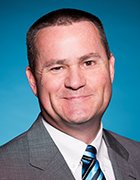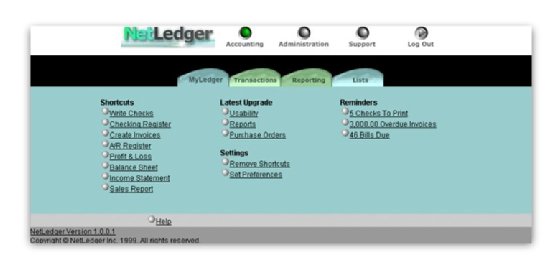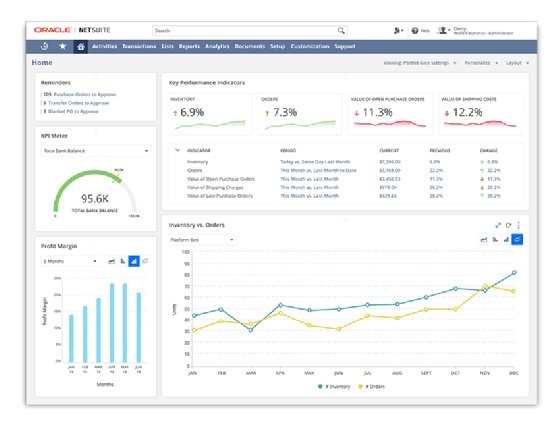
Fotolia
ERP evolution sees major shifts in holistic view of business
Implementers and users recall the late 1990s move off mainframes and the rise of SaaS and monolithic suites. Plus, ERP founders Hasso Plattner of SAP and Evan Goldberg of NetSuite share their insights.
The evolution of ERP can seem like a game of survival of the fittest terminology for inherently complex software that manages an entire business.
The software was already well on its way to becoming the central nervous system of most businesses when research firm Gartner coined the term at the start of the 1990s. Its predecessor, material requirements planning (MRP) software, a mainstay of manufacturers since the 1970s, had expanded into financials and other essential functions and been renamed manufacturing resource planning (MRP II). Gartner analysts realized a more inclusive name was necessary for a growing category of software that offered a single, integrated system with a central database and dedicated modules for essential processes, such as accounting, HR, order management, sales and supply chain.
The term enterprise resource planning was born.
The evolution of ERP accelerated rapidly through the 1990s, spurred by the growing popularity of GUIs, such as Apple Mac OS and Microsoft Windows. The advent of the World Wide Web added a hyperlinked point-and-click architecture and an exponentially growing public network, colloquially known as the cloud. By the end of the decade, the technical paradigms still in place today were firmly established, as were the goals: Make ERP more comprehensive, accessible, easy to use and maintain, and affordable.
But has ERP really lived up to its promise of helping organizations run more efficiently? What have been its strengths and weaknesses? Where will ERP's evolution lead in the near future?
Users gain control in move from mainframes to client-server
At the start of the 1990s, ERP mostly ran on mainframes and had a character-based UI that required entering code to move around the system.
 Mike Guay
Mike Guay
"They replaced basically siloed, nonintegrated [business] systems, and they served their purpose: data consistency and process consistency," said Mike Guay, Gartner research director, who, at the time, worked in MRP development and consulting. "The problem was they weren't very user-friendly."
To improve usability, vendors started using Citrix and other client software to give ERP systems a more Windows-like UI, Guay said.
Thus began the shift in computing models from mainframes to client-server in which PCs communicate with a central server. SAP, an ERP pioneer in the early 1970s, released R/3, its first client-server system and flagship for years to come. PeopleSoft, another major brand with an HR focus, began life as a client-server application.
"You had all these client-server apps, and they were supposed to create the power at the desktop and then transfer that power to the end users," Guay said. "But the systems were still incredibly complex."
The 1990s were also a time when ERP databases had thousands of tables, which made it hard to get information out of them, but they were good at processing thousands of transactions an hour.
"The system was there to enforce data integrity and process integrity, and it did that pretty well," Guay said. "You couldn't enter a purchase order if the vendor number didn't exist; you couldn't add a purchase order line item for a part if the part number didn't exist."
 Hasso Plattner
Hasso Plattner
Client-server technology enabled SAP to bring ERP to larger and larger companies, especially in the U.S. and later globally, said SAP Co-Founder Hasso Plattner in an email.
"The integrated order fulfillment module was key in many high-tech companies," Plattner said.
SAP also had to adapt its manufacturing features to the new globalization movement. Collaboration with large system integrators (SIs), such as Accenture and Deloitte, was crucial to SAP's success in those days, he said.
ERP customization a double-edged sword
SIs' increased involvement in implementing ERP systems also brought the new challenge of extensive customization, Plattner said. ERP customization made ERP workable for many companies. Today, that customization is both an impediment to moving to SaaS versions of ERP and a major influence in the design philosophies of SaaS ERP vendors as they struggle to provide some flexibility without the cost, risk and complexity.
"In [standardized] software, you have to separate the original code and customer extensions as much as possible," Plattner said. "I always wanted to avoid any changes to the source code but couldn't win that battle for R/3. In the cloud world, this is now changing for the better."
In other words, Plattner tried to make R/3's underlying source code standard for all customers as SaaS ERP mostly is now.
As more large companies made ERP their centerpieces, the functionality of the software increased tremendously, Plattner said.
There was a cost, however.
"Maintenance became the great challenge -- and very expensive," he said.
 Mark Mitchell
Mark Mitchell
American Airlines had a history of customizing and tailoring its on-premises SAP system to meet the complex needs of the business, said Mark Mitchell, a longtime SAP user and managing director and head of HR shared services at the airline. If that was too expensive or difficult, patches, integrations and new applications running outside the system were other ways to meet those needs.
The result was a tangled web -- albeit an effective one, Mitchell said.
"It was certainly an expensive and complex model to update and modernize during those 20 years, which led us to not do as much as we would have liked to have done and just live with the existing system," he said.
Early 2000s bring monolithic ERP suites
Two issues boosted demand for ERP in the late 90s: the Y2K scare, when companies updated or replaced software that couldn't distinguish years by century, and a desire to move away from siloed systems and have a single system for managing every major part of the business, Guay said.
"'If we're going to do one of these big system replacements, let's at least get something that allows us to have an end-to-end process where we don't have to worry about shoving piles of data from finance to purchasing to inventory," he said of the early 2000s attitude.
By the first decade of the 21st century, the size and complexity of ERP implementations grew to the point that more buyers had to hire SIs to manage the projects, according to Guay. Populating the systems with the data needed to set them up was a huge endeavor that would take at least a year or two and perhaps cost $100 million, he said.
The work didn't end there.
"After you finish that, three or four years later, you do a major upgrade, and then three or four years after that, you do another major upgrade," Guay said. "And you're doing your upgrades to stay current on support because upgrades were disruptive, painful and expensive."
Herman Miller, a furniture maker based in Zeeland, Mich., had its own upgrade saga. Its deployment of Baan, a major brand in the 1990s, took five years, according to Kathleen DeBruyn, the company's technology manager and ERP lead for HR, finance and order fulfillment systems. Other projects more essential to the business strategy took priority, elongating the deployment timelines, she said.
"Twenty years ago, we didn't have the tools for collaboration like we do today -- we had basically email and showing up for a meeting -- and it's hard to believe that, 20 years ago, we didn't have cellphones," DeBruyn said. "I think we sometimes look back with the lenses today [and] don't give ourselves enough credit for what we've accomplished."
Nevertheless, Baan was a clear improvement over the homegrown mainframe ERP, though what seemed so new at the time -- such as the ability to perform quality checks and improved margin analysis -- "seems antiquated now," she said.
Herman Miller has since upgraded to LN, the name Infor gave the Baan system after acquiring the vendor in 2003. The UX, with its hyperlinked data access, is a big improvement over the original early 2000s Baan system. Accessing modules in that system required opening separate screens, which made the UX complex.
The emergence of cloud
Perhaps no other technology development influenced ERP evolution of the last 20 years as much as the emergence of the cloud. Although cloud computing was not strictly new, the increased internet bandwidth and friendlier browser UIs of the late 1990s enabled the technology to flourish.
The word revolution can be thrown around carelessly by marketers, but cloud has been truly revolutionary for ERP. The ability to run the complex software from vendor or third-party data centers meant IT departments didn't have to maintain the infrastructure.
Deployment in the cloud, especially SaaS with its shorter upgrade cycles and no-touch extensions, has helped to simplify ERP systems that would otherwise have become more complex, SAP's Plattner said.
The turn of the century is also when debates about best of breed, or specialty, applications started, as companies realized some of the modules in their ERP suites might be too basic and they might do better with software from specialized vendors.
The cloud began having its biggest effect on ERP's evolution in the 2010s, according to Guay, with the growth of SaaS applications that address a single business function. The most popular ones were for CRM and human capital management (HCM). The demand for such specialized modules had already become apparent in the prior decade when PeopleSoft and Siebel, a CRM vendor, grew popular -- both were later absorbed by Oracle. But Siebel was still complex and expensive to implement, Guay said.
Enter Salesforce. The CRM company exemplified both the power of the cloud and business leaders' hunger for technology that spoke directly to their most pressing needs.
"[Salesforce was] just selling CRM, and they were selling it on the cloud, which meant you didn't have to get a multimillion-dollar capital expenditure to implement this functionality," Guay said.
Salesforce also bypassed CIOs and went straight to the line-of-business leaders.
"They would go to the VP of marketing or the VP of sales and say, 'You know what? If you want to start using this really fancy CRM package, we've got -- which, by the way, you can use on your smartphone -- it's only $50 a user a month. Just tell me how many users you want, and we'll set you up,'" Guay said.
Sales wasn't the only underserved business function. The desire to upgrade another key process -- HCM -- led to the emergence of new SaaS players, such as SuccessFactors, which was bought by SAP in 2012, and Workday, an HCM-centric suite developed by ex-PeopleSoft executives.
In 2013, Gartner coined this emerging phenomenon of mix-and-match applications postmodern ERP, the third stage in the evolution of ERP that started with classic ERP, which was the separate MRP and accounting products, followed by the modern ERP era of suites, Guay said.
"We were trying to tell people, 'Look, you don't want to go back to the bad, old days of best of breed [and] turn it into the Wild West," and tell VPs of finance, marketing and HR, 'Go get whatever the heck you want,'" he said.
Instead, companies should view their enterprise application purchases holistically. Just wanting to replace the ERP wasn't good enough.
Oracle gives birth to SaaS ERP
mug.jpg) Evan Goldberg
Evan Goldberg
Few people are more responsible for ERP's radical shift to the cloud than Evan Goldberg. In 1999, he founded NetLedger, a SaaS accounting package that soon expanded to ERP functions, like HCM and CRM, and was renamed NetSuite.
Goldberg recalled how his decision to pursue SaaS grew from his time working on the database side of Oracle in the early '90s.
Goldberg joined future Salesforce Founder Marc Benioff in Oracle's Mac group.
"The mission was to take the power of Oracle and make it accessible to people," Goldberg said.
The company Goldberg founded before NetLedger, mBed Software, also used interactive UIs to access powerful systems behind the scenes.

Running his own fast-growing business showed him the value of an integrated system. He was using five different systems for essentials like payroll and customer lists.
"That's where it became clear to me that fast-growing businesses didn't have the tools they need to really effectively operate their businesses," Goldberg said.
NetSuite grew out of discussions with Oracle Founder Larry Ellison, who had the idea that small businesses needed systems they didn't have to manage themselves, said Goldberg, now executive vice president of Oracle NetSuite after a 2016 acquisition.

Goldberg became sold on the idea of SaaS when he saw his company's QuickBooks file displayed on a web browser in his home.
"In the course of a five-minute phone conversation, that's where we dreamed up the idea of NetSuite," he said. "Let's make something that can help run a fast-growing business delivered over the web, and let's have it encompass front office and back office, your website, your employee information and your sales information."
Ellison was sure that ERP applications would be delivered over the web for the foreseeable future, Goldberg said.
"He used to joke that, 'This is how people are going to do business applications for the next thousand years,'" Goldberg said. "'I don't know what's going to happen after that but definitely for the next thousand years.'"
A few months later, Benioff, who was still at Oracle, told Goldberg he planned to start a SaaS-based company focused on sales. That company eventually became Salesforce. Meanwhile, Oracle started experimenting with its own SaaS called Oracle Business Online, Goldberg said. The vendor soon began rebuilding its on-premises ERP, E-Business Suite and other business applications from scratch, later developing the Fusion applications that make up today's Oracle ERP Cloud.
NetSuite's customers are mostly SMBs that have reached the limits of their accounting packages.
"They don't have any kind of holistic view of what's going on in their business," Goldberg said. "That's sort of what ERP is all about, you know. It's about a holistic view of your resources and then being able to plan effectively."
The second and third parts of the series examine the successes and failures of the past decade of ERP evolution, the state of the art in 2019 and where today's leading edge may take ERP in the near future.







